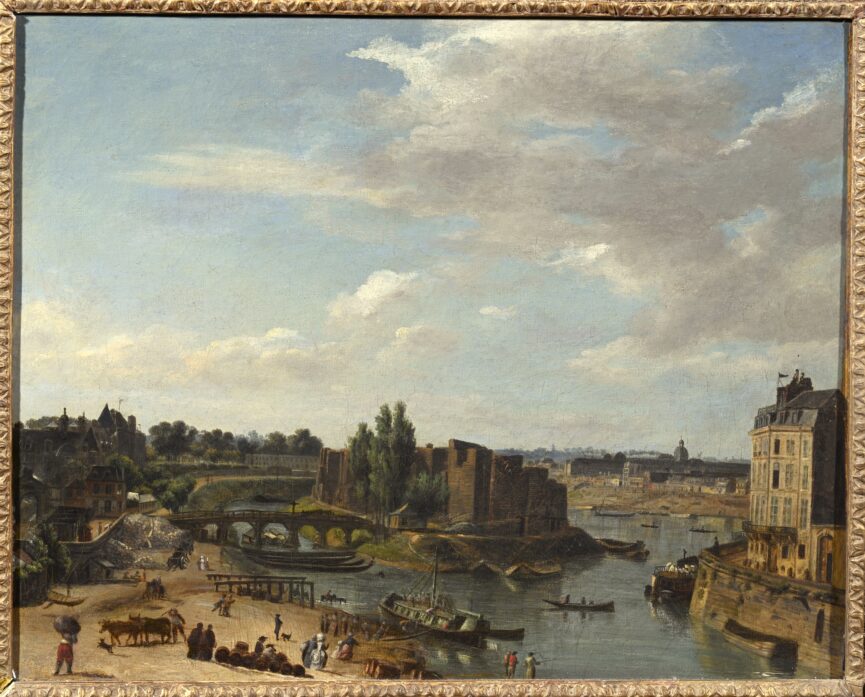Attributed to LOUIS-NICOLAS LESPINASSE
Pouilly 1734 - Paris 1808A View of Paris from the Rive Droite of the Seine, with the Ile Saint-Louis to the right and the Hopital Pitié-Salpêtrière in the distance
Oil on canvas: 15 x 18 in. 37.8 x 45.8 cm.
Provenance: Private English collection
Our knowledge of how Paris looked in the late eighteenth century is largely due to the exquisitely detailed drawings of Lespinassse. This view presents a variant on the panoramic Port Saint Paul in the Carnavalet Museum which was exhibited in the exhibition French Landscape Drawings and Sketches of the Eighteenth Century at the British Museum in 1977.
The catalogue stated that “His well-known series of views of Paris combine purity of line and freshness of colour with an extraordinarily exact sense of topographical and atmospherical accuracy. He had a particular feeling for the transformation brought about by the change in the light at different times of day, and often inscribed on his drawings the hour when they were made.” On one of the two views of Paris exhibited, which are among the masterpieces of late-eighteenth century Parisian topographical drawing, he has noted that “the lighting of this picture is that of the hour between 11 o’clock and midday”. Our view is taken from a higher point than the drawing and omits the nearside quai with its terrace of houses on the left. In the centre, however, can be seen the Ile Louviers, covered in enormous piles of wood, connected with the right bank by the pont de Grammont. This bridge crosses a branch of the Seine which has since been filled in and has become the Quai Henri IV. In the distance one would now see the Gare Austerlitz. The same ferry as in the drawing is taking on its load of passengers. It is interesting to note the different lighting of this view. In the Carnavalet drawing the light source appears to be from the south-west which would place the time of execution at sometime in the afternoon, commensurate with the activity on the quai. In our picture, however, the source is now the east, and the view must have been taken in the early morning. The result is a strong and atmospheric contre jour effect, which, in its crystalline delicacy, anticipates the Italian views of Corot.
Lespinasse came from a family of provincial nobility in the neighbourhood of Nevers; he was a Chevalier de lOrdre Royale et militaire de Saint-Louis. He was elected to the Academie in 1787 with a panoramic view of Paris. He exhibited at the Salon from 1787 until 1801, and in the latter year published a treatise on perspective. Views of St.Petersburg show that he spent some time in Russia. Other topographical watercolours are in the Musee de Versailles and the Louvre.

